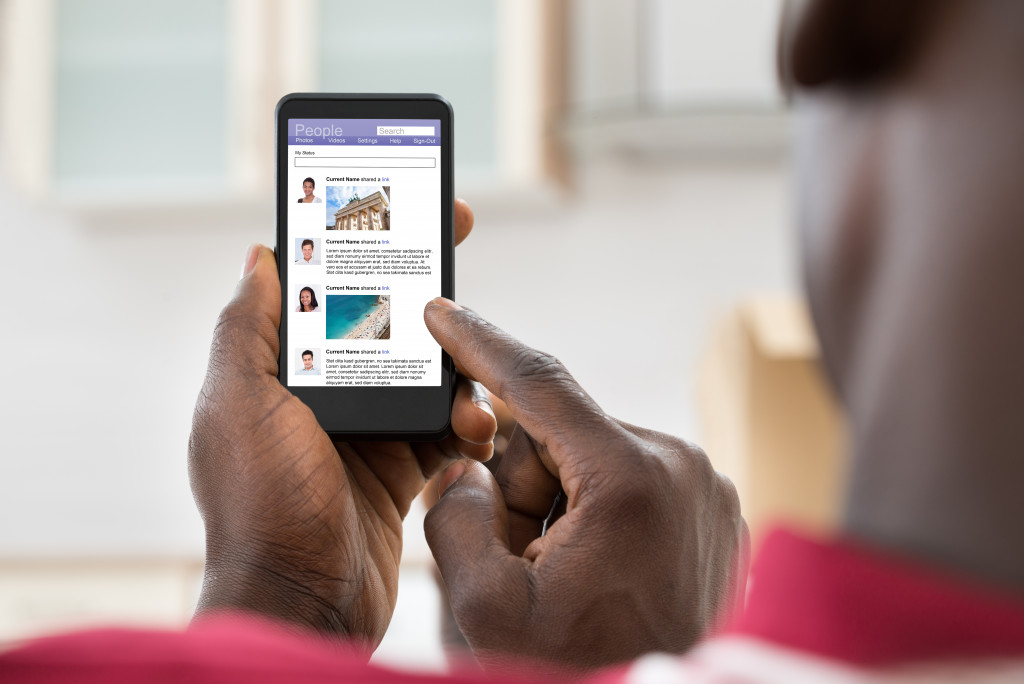- Mobile-first strategies help businesses stay relevant and competitive in today’s market.
- Optimizing user experience (UX) is key to mobile-first success, including mobile-friendly design and navigation.
- Utilizing social media, video content, and personalized experiences helps businesses connect with customers on mobile devices.
- Mobile advertising is essential to a successful mobile-first strategy, with innovative ad formats being important.
- Animated videos and interstitial ads can capture users’ attention and improve engagement and user experience.
How businesses operate and reach their target audience has changed significantly. With more than half of the world’s population relying heavily on mobile phones, mobile devices have become the go-to platform for people to access information, connect with others, and shop online. This shift to mobile has drastically transformed the landscape of businesses, requiring them to prioritize mobile-first strategies to survive in today’s market.
As a business owner or entrepreneur, mastering the mobile-first landscape is crucial to stay ahead. Here’s what you need to know about mobile-first strategies and provide tips on how to master them in your business.
The Importance of Mobile-First Strategies
Mobile-first is not just about using mobile devices as the primary mode of communication; it’s a complete overhaul of how businesses conceive their marketing strategies. In today’s landscape, businesses that put mobile first, offering mobile-optimized websites, apps, and mobile-centric experiences, stand out from the competition.
This is because mobile optimization is often the difference between a good customer experience and a bad one. With mobile-first strategies, businesses can cater to their customer’s needs, increase engagement and conversion rates, and ultimately thrive in a competitive environment. Here are ways to improve your mobile-first strategy:
Focus on User Experience (UX)
Mobile devices have created a universe of their own, with their users having unique needs and preferences. In this context, user experience (UX) is fundamental to how customers interact with a business, product, or service. Therefore, focusing on designing a mobile-friendly UX that caters to users’ needs is essential. This includes optimizing the website or app design for smaller screens, reducing page-loading times, providing easy navigation, and ensuring the user can easily complete their tasks.

Using Social Media and Video Content
Social media marketing has become a highly effective way for businesses to reach customers and attract new ones. With a growing number of users in the coming years, it’s a platform you should utilize whenever possible.
Since most social media platforms are mobile-friendly, businesses can prioritize mobile-first strategies that enhance social media user experiences. Additionally, video content has become a popular way to engage customers in a more dynamic and engaging format. It’s also a great way to reach users on mobile devices, as more people are watching videos on their phones and tablets.
Personalization is Key
Customers want businesses to know and understand their preferences and needs; personalization is an excellent way to show them you do. Personalization is about providing tailored experiences that match each customer’s preferences or past interactions with your business. For Mobile-first strategies, this can include personalizing mobile app interfaces, recommending products and services based on the user’s location or browsing history, and sending personalized offers over mobile devices.
The Role of Mobile Advertising
It’s quite clear that mobile advertising has risen over the last few years, and it’s expected to continue growing. You can gain many consumers by utilizing the tips above in no time. However, you must use advertising alongside your mobile-first strategy.
While advertising can be annoying, it can enhance the user experience and even drive conversions. To get the most out of mobile advertising, businesses should prioritize introducing innovative ad formats that blend effortlessly with mobile content. Here are some great ad formats for your mobile consumers:

Promote Your Brand
You should always promote your brand first. It can help your company be remembered quickly and even recognized when potential customers seek a product or service. If you struggle to do this, try hiring a professional brander. A well-known branding service can help your business be known. Furthermore, there are plenty of online branding services available to help you.
Animated Videos
Animated videos are an engaging way of promoting your product or service on mobile devices. They can grab viewers’ attention quickly and engage them for a longer period. Animations also allow you to be creative, stand out from the competition, and showcase demos or explain complex concepts in an easy-to-understand way.
Interstitials
Interstitial ads are full-screen advertisements that appear when a user transitions from one page or app to another. They help capture users’ attention by providing them with visually appealing content. However, it’s essential to ensure interstitial ads are non-intrusive and allow users to access the required content.
By understanding mobile-first strategies, businesses can effectively reach their mobile customers and beat out their competition. You can reach out to many consumers worldwide by focusing on various strategies. Ultimately, businesses can drive conversions, increase engagement, and build better customer relationships.
